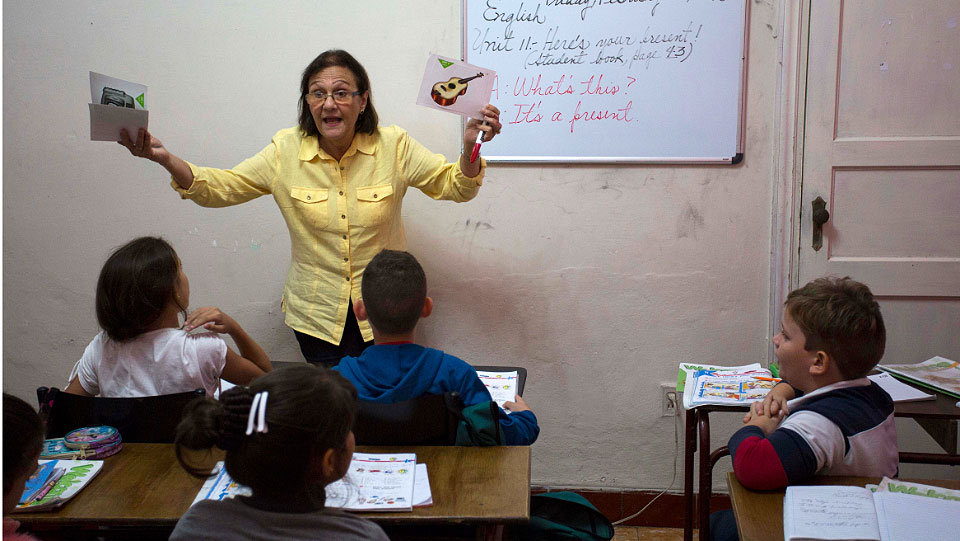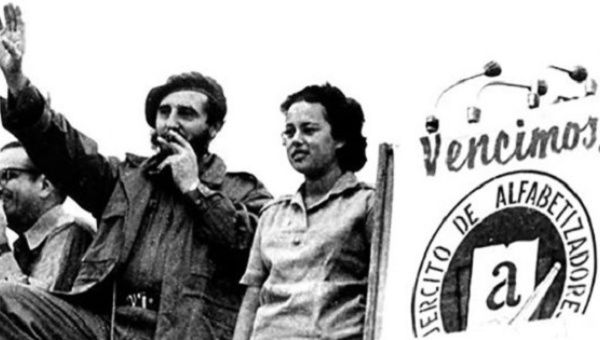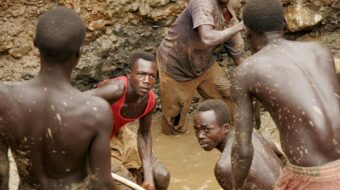
Cuban education has long been ground zero for ending inequalities.
Schools on the island are places where doors opened up for all Cuban young people to learn and for students, even of oppressed classes, to prepare for one or another kind of work that would contribute to Cuba’s development as an independent nation.
Cuban literacy teachers, 123 of them, arrived in Honduras on Dec. 20. With Honduran colleagues, they will be utilizing Cuba’s special method, “Yo sí puedo” (Yes I can), to teach literacy. It’s a technique that has found worldwide application.
Dec. 22 in Cuba is Teacher’s Day. On that date in 1961—Cuba’s “Year of Education”—Fidel Castro, speaking before a large crowd in Havana, announced the end of Cuba’s literacy campaign of that year. He declared Cuba to be a “territory free of illiteracy.”
On hand were 100,000 young people who had volunteered to teach the rudiments of reading and writing to illiterate adults living in rural areas. These young people, mostly from Cuba’s cities, lived with families they were teaching and did farm work.
Joining them in the island-wide literacy campaign were tens of thousands of volunteer teachers, unionists, and other working people. In the end, 271,000 literacy volunteers enabled 707,000 Cubans (out of a population of 7,291,200) to learn how to read.
The figure of José Martí, Cuba’s national hero, epitomizes for Cubans the affinity of education and revolution. Introducing Martí’s book On Education (Monthly Review Press, 1978), editor Philip Foner observes that, “Basic to the foundation of liberty, in the eyes of José Martí, was the education of the people. Nothing guaranteed that a government was anxious to serve its citizens as much as the haste it displayed in educating its people.”

In comments in September 1961 about the literacy campaign, Castro updated Martí’s idea: “One does not conceive of a revolution without also a great revolution in the educational arena … revolution and education are almost two synonymous ideas … [The] Revolution will advance and be successful the more it works in the field of education, the more competent technicians there are, the more competent administrators, teachers, revolutionary cadre it has.”
Foner notes that in 1959, 23% of Cubans were illiterate, the “average school education was below third grade,” and “only a few thousand” children were attending secondary schools. By December 1961, according to Castro, the revolutionary government had created 15,000 schools while converting military installations into schools and building schools for handicapped children.
By 1973, literacy was all but universal. Some 1,898,000 children were attending primary school, and 470,000 were enrolled in secondary schools, according to Foner. By that time, a “second educational revolution” was in progress with the training of 20,000 additional teachers to handle waves of students now attending secondary and pre-university schools.
A third educational “revolution” was underway from 2000 on. Associated with what the Cuban state referred to as the “Battle of Ideas,” it called for teaching that emphasized social justice and equality and was accompanied by moral and social support for students. Education in the arts expanded, and there were new social-work schools. Visual, audio, and computer-based methods were newly available to teachers.
University enrollment increased as authorities extended instruction to students’ own localities while relying on computer-based and televised teaching aids. By 2015, 80% of university students were studying close to home.
Some problems emerged, however. Teaching programs in science and technology lost students to courses in the humanities and social sciences. University teaching was contributing less than before to the country’s economic development. Fewer students were preparing to be teachers, and 20,000 teachers had left their posts for the sake of better-paying jobs.
Reversing course, the government cut back on university teaching at the local level, made entrance exams more competitive, re-emphasized scientific and technical training, and shortened the university course of study. As of 2019, 241,000 students, or one in three Cubans between 18 and 24 years of age, were studying in 50 university centers. Almost 50% of them were taking medical-sciences courses; 8,542 were art students.
All along, the U.S. economic blockade was causing shortages and adding difficulties. A report presented by Cuba’s Education Ministry in early 2022 explains:
- Under blockade rules, Cuba lacks access to the credit needed for buying goods abroad.
- Importing is difficult due in part to price hikes resulting from high freight costs for importing goods from places other than the United States.
- The inflated costs of goods purchased abroad from third-party intermediaries discourage imports.
- Under blockade regulations, specific items manufactured anywhere with even tiny U.S. components are prohibited.
The list of necessary and often missing items is long: paper, books, notebooks, computers, audio-visual devices, laboratory supplies, laboratory equipment, writing materials, art supplies, sports equipment, special devices used by handicapped students, musical instruments, recording devices, English language texts and books, broadband internet connections, and replacement parts for equipment.
Nevertheless, as the result of sustained efforts over decades, students have been prepared to take on varied tasks aimed at developing Cuba’s economy and building socialism.
- Between 1960 and 2017, Cuban universities graduated 1.2 million “professionals,” including 80,000 physicians. Women accounted for 64% of university graduates in 2010, up from 3% in 1959. University graduates in 2019 made up 2.2% of Cuban workers.
- Spending on education in Cuba in 2012 represented 9% of the GDP. The comparable figure in the United States currently is 4.96% of GDP. Cuba in 2018 dedicated 13% of its national budget to education.
In Cuba in 1995, a Cuban woman hitched a ride on a small bus carrying Maine visitors, myself included, from Havana to Trinidad. “We Cubans want producers, not consumers,” we heard her say. Fidel Castro spoke similarly on that first Teachers Day in 1961.
He dismissed fellow University of Havana law students as “all those people with nothing to do but to study to be a lawyer.” At that time, “the ruling class was not teaching the children of workers.” That “half the population, the rural population, had no secondary school” he regarded as a “serious problem for any revolution in an underdeveloped country like ours. What few technical workers there are come from upper-income sectors … from the economically and politically dominant class, which, logically, is opposed to revolutionary change.”
Leftists in the United States and elsewhere often regard reform and revolution as separate projects. Cuba’s experience of preparing young citizens to work at what would become socialism may be relevant.
Small though they may be, certain reforms happening now within U.S. schools, rife with inequalities, could end up serving the revolution on the way, and in that way be revolutionary. Such reforms: the fostering of equality among students, the inculcation of real knowledge about societal problems, and students’ work projects that are oriented to the common good.












Comments